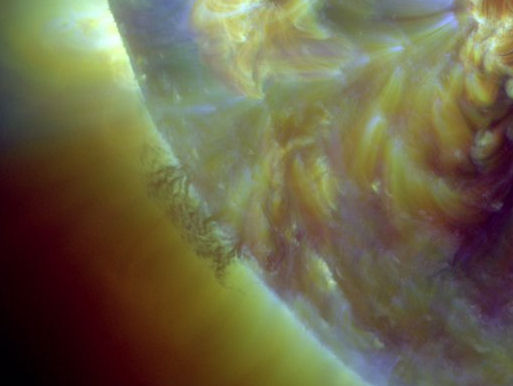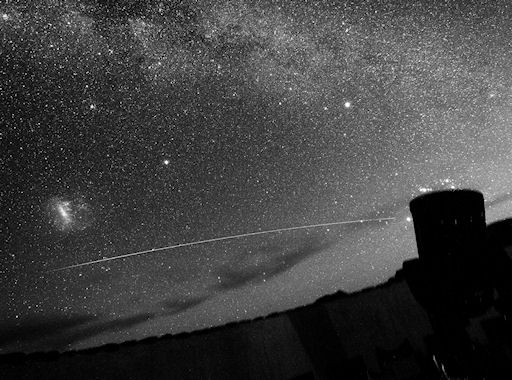Metallic photos of the sun by renowned photographer Greg Piepol bring together the best of art and science. Buy one or a whole set. They make a stellar gift. | | |
FREE-FLOATING PLANETS: Astronomers have discovered a new class of planets floating alone in the dark of space. These lone worlds are probably outcasts from developing planetary systems and, moreover, they could be twice as numerous as the stars themselves. Get the full story from Science@NASA.
POINTS OF INTEREST: Solar activity is so low, NOAA forecasters say the chance of a strong flare today is less than 1%. Boring? Even the quiet sun has points of interest. Consider this extreme ultraviolet image taken during the early hours of May 20th by NASA's Solar Dynamics Observatory:

Shown above, a hedgerow of cool, dark plasma held aloft by magnetic fields is backlit by the hot solar corona. The entire "bush" is about eight times wider than Earth. Before the Hubble-sharp cameras of SDO were brought to bear on the sun, structures like this were seen either in poor detail or not at all. As a result, no one can say with any surety what will happen next. Will the plasma weigh down its magnetic support and collapse, bringing an end to the quiet, or instead remain a simple point of interest? Stay tuned.
more images: from Robert Arnold of Isle of Skye, Scotland; from Peter Desypris of Athens,Greece; from Fabrizio Barbaglia of Cecima, Italy
NAMIBIA FLYBY: Last night the International Space Station with shuttle Endeavour docked alongside flew over Namibia--and right by the Large Magellanic Cloud (LMC). Photographer George Tucker recorded the southern hemisphere encounter from Namibia's Sossusvlei Desert Lodge:

"It was a beautiful view in crystal-clear desert skies," says Tucker. "Orion is partially hidden by the telescope and the LMC is the fuzzy object on the left."
This kind of scene is repeating itself around the world. Docked together, Endeavour and ISS are brighter than any star in the sky, and they look beautiful even without the decoration of nearby galaxies. Check the web or your cell phone for local flyby times.
more images: from Oleg Toumilovitch of Blairgowrie, Randburg, South Africa
April 2011 Aurora Gallery
[previous Aprils: 2010, 2009, 2008, 2007, 2006, 2005, 2004, 2003, 2002]
Potentially Hazardous Asteroids (
PHAs) are space rocks larger than approximately 100m that can come closer to Earth than 0.05 AU. None of the known PHAs is on a collision course with our planet, although astronomers are finding
new ones all the time.
On May 20, 2011 there were 1224 potentially hazardous asteroids.
Notes: LD means "Lunar Distance." 1 LD = 384,401 km, the distance between Earth and the Moon. 1 LD also equals 0.00256 AU. MAG is the visual magnitude of the asteroid on the date of closest approach. | | The official U.S. government space weather bureau |
| | The first place to look for information about sundogs, pillars, rainbows and related phenomena. |
| | Researchers call it a "Hubble for the sun." SDO is the most advanced solar observatory ever. |
| | 3D views of the sun from NASA's Solar and Terrestrial Relations Observatory |
| | Realtime and archival images of the Sun from SOHO. |
| | from the NOAA Space Environment Center |
| | the underlying science of space weather |
| | for out-of-this-world printing and graphics |

